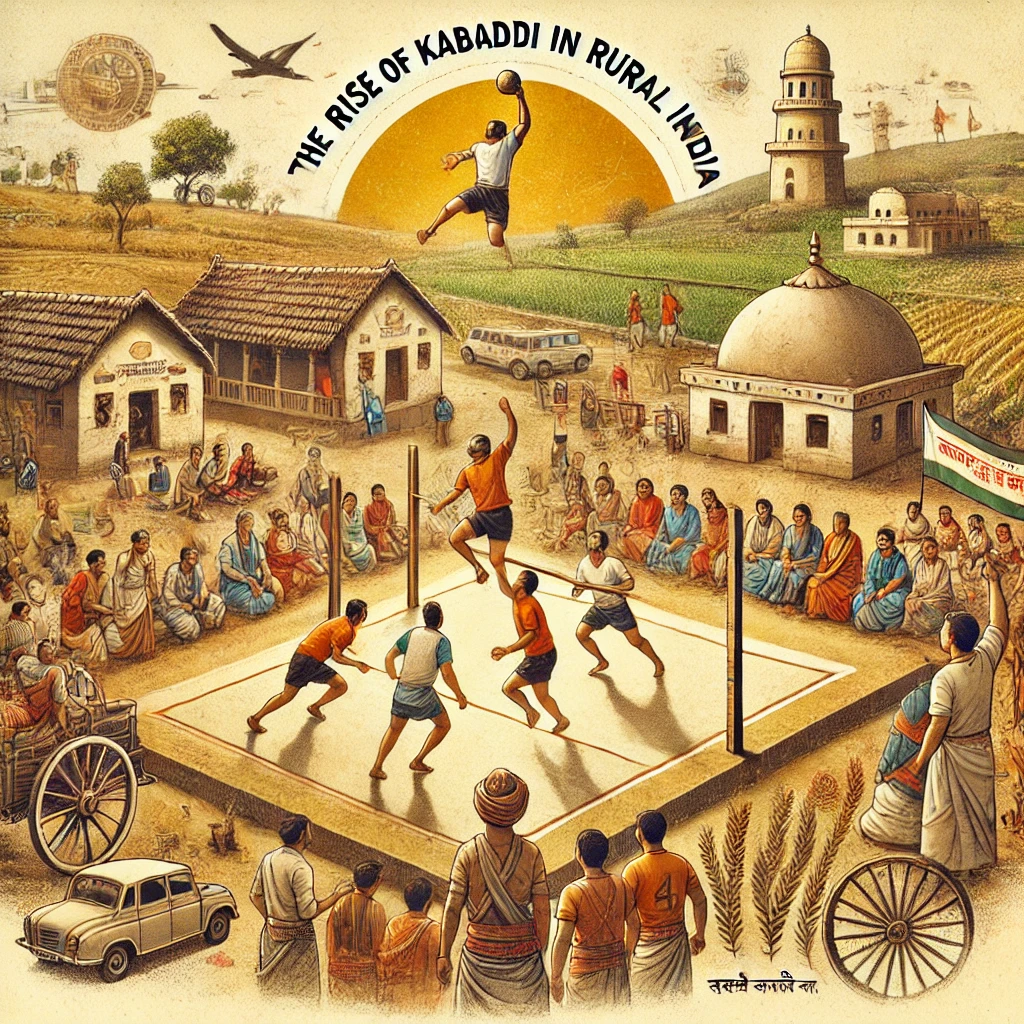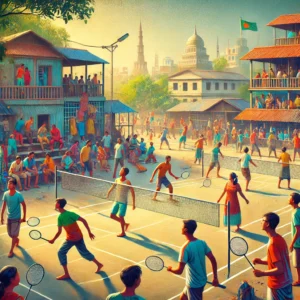Kabaddi, a sport deeply rooted in Indian tradition, has seen a remarkable resurgence in rural India, where it has long been a symbol of strength, community, and pride. Played across village grounds for generations, Kabaddi holds a special place in the hearts of rural populations, offering not just a form of entertainment but also a platform to showcase physical endurance and teamwork.
The simplicity of the game—requiring no expensive equipment, just a patch of ground—has made it accessible to even the most remote villages. Kabaddi embodies the spirit of rural life, emphasizing resilience, quick thinking, and strategy. Over time, what began as a local pastime has grown into a national phenomenon, largely due to the rise of professional Kabaddi leagues, increased media coverage, and government support for traditional sports.
However, despite the national recognition that Kabaddi enjoys today, its essence remains deeply tied to the rural landscape. In village competitions, Kabaddi is not just about winning; it is a way to foster community spirit, celebrate local culture, and bring people together. The sport is often central to festivals and fairs, where teams from neighboring villages compete, building both camaraderie and healthy rivalry.
In this context, Kabaddi’s rise in rural India is not just about the growth of a sport—it’s about the preservation of a cultural heritage that resonates with the values of discipline, teamwork, and local pride. As it continues to gain popularity, Kabaddi serves as a reminder of the rich traditions that continue to thrive in India’s heartland.
The Historical Roots of Kabaddi
Kabaddi, often referred to as the “game of the masses,” has deep historical roots in India, tracing back over 4,000 years. The origins of the sport are steeped in ancient folklore, with many believing that it was born out of the necessity for physical endurance and survival skills in rural communities. Some legends even tie Kabaddi to Indian mythology, claiming that warriors and heroes used it as a form of training to improve their agility, strength, and mental toughness.
Traditionally played in small villages, Kabaddi was more than just a sport—it was a reflection of rural life and the community spirit that binds it. It provided a platform for young men to showcase their bravery, speed, and coordination. The game requires minimal resources, making it easily accessible to all. Its only real requirement is a clear, open space, which explains why it thrived in the rural heartlands of India, where formal sports infrastructure was scarce.
In early times, Kabaddi was used not only as entertainment but also as a way to build teamwork and instill discipline among the youth. It was common for villages to organize matches during festivals and local gatherings, turning the sport into a cultural event that brought entire communities together. The competitive nature of Kabaddi also contributed to the strengthening of bonds between neighboring villages, fostering both rivalry and unity.
Despite being played informally for centuries, Kabaddi remained relatively unknown to the broader Indian population until the early 20th century, when formal rules were codified, and the sport began to gain official recognition. In 1938, Kabaddi was included as a demonstration sport at the Indian Olympic Games in Calcutta, marking its first major step into the national spotlight.
Today, Kabaddi remains deeply connected to its rural roots. While it has evolved and gained prominence on a national and international level, particularly through the launch of the Pro Kabaddi League, it continues to represent the essence of rural India—its simplicity, strength, and sense of community. For many rural athletes, Kabaddi is not just a game; it is a way to preserve and honor the traditions and values passed down through generations.
The Role of Kabaddi in Building Community Spirit
Kabaddi has always played a significant role in fostering community spirit, especially in rural India. The sport is not just a physical contest, but a cultural event that brings people together, creating a strong sense of unity and pride within villages. In many rural areas, Kabaddi matches are key social events, often held during festivals or local fairs, where the entire village gathers to cheer on their local teams.
One of the ways Kabaddi fosters community spirit is by encouraging teamwork and cooperation. The game relies heavily on collaboration and trust between players, as a single misstep can lead to defeat. This need for cohesion on the field mirrors the cooperation required in rural life, where community members often work together to achieve common goals, such as farming or village development projects.
Kabaddi also plays a role in promoting physical fitness and discipline, particularly among the youth. By engaging in regular Kabaddi practice, young people develop important life skills, such as perseverance, strategy, and respect for their opponents. This helps to instill values that extend beyond the playing field, strengthening the social fabric of the community.
Moreover, Kabaddi helps celebrate local traditions and identity. Villages often take great pride in their local Kabaddi teams, viewing them as representatives of their cultural heritage. Victories in Kabaddi matches are celebrated as communal achievements, fostering a sense of collective pride and belonging.
In conclusion, Kabaddi is more than just a sport in rural India—it is a unifying force that strengthens community bonds, promotes physical and mental resilience, and keeps the spirit of tradition alive. Through Kabaddi, villages come together, not just to compete, but to celebrate their shared identity and culture.
How Kabaddi Has Evolved Over the Years
Kabaddi has undergone a significant transformation over the years, evolving from a traditional rural pastime into a widely recognized sport both nationally and internationally. This evolution reflects the changing landscape of Indian sports and the growing efforts to promote indigenous games on a larger scale.
From Village Grounds to National Recognition
Historically, Kabaddi was primarily played in the rural heartlands of India, particularly in states like Maharashtra, Punjab, and Tamil Nadu. It was a simple game that required no equipment, making it accessible to people of all ages and socioeconomic backgrounds. However, for much of its history, Kabaddi remained a local phenomenon, rarely venturing beyond village competitions and local festivals. Despite its popularity in rural areas, it had limited recognition on the national stage.
The tide began to turn in the mid-20th century, when efforts were made to formalize the game. In 1938, Kabaddi was included as a demonstration sport at the Indian Olympic Games in Calcutta. This moment marked the beginning of Kabaddi’s journey toward national recognition. In the decades that followed, the sport continued to gain attention, particularly with the formation of the Amateur Kabaddi Federation of India (AKFI) in 1950. The AKFI established official rules, making the sport more structured and organized. Kabaddi was also included in major events like the Asian Games, where India has consistently dominated.
The Influence of Professional Leagues and Media Exposure
A major turning point in Kabaddi’s evolution came with the launch of the Pro Kabaddi League (PKL) in 2014. The PKL brought Kabaddi into the spotlight by professionalizing the sport and presenting it to a much broader audience. Televised matches, team franchises, and celebrity endorsements played a crucial role in elevating Kabaddi’s status, turning it into a mainstream sport in India.
The PKL not only provided a platform for rural athletes to showcase their talents on a national level but also introduced Kabaddi to urban audiences, many of whom were unfamiliar with the sport. The league’s fast-paced format, combined with high-quality broadcasting and modern marketing strategies, helped capture the attention of millions of viewers across the country.
Media exposure has played a key role in Kabaddi’s modern-day success. What was once a rural sport is now a professional league with millions of fans, sponsorship deals, and a thriving viewership. With the rise of digital platforms and social media, Kabaddi has also reached international audiences, attracting fans from beyond India’s borders.
In conclusion, Kabaddi has evolved from its roots as a village sport to become a nationally recognized and celebrated game. The rise of professional leagues like the PKL, combined with increased media exposure, has transformed Kabaddi into a sport that transcends geographical and social boundaries. Its evolution is a testament to the sport’s enduring appeal and the growing importance of indigenous games in India’s sporting landscape.
The Challenges Kabaddi Faces in Rural India
Despite Kabaddi’s rich cultural heritage and its growing recognition on the national stage, the sport continues to face several challenges in rural India. These challenges hinder the full potential of Kabaddi and limit opportunities for aspiring athletes in villages.
- Lack of Infrastructure and Training Facilities
One of the biggest obstacles Kabaddi faces in rural areas is the absence of proper infrastructure. Most villages do not have well-maintained grounds or specialized training centers. Players often practice on uneven, dusty fields, which increases the risk of injuries. Without access to modern training facilities, rural athletes struggle to refine their skills and compete at higher levels. - Limited Access to Sponsorships and Funding
While professional leagues like the Pro Kabaddi League have brought attention to the sport, rural players often lack access to sponsorship deals and financial support. Many talented athletes cannot afford proper training gear or travel costs to attend competitions. This financial barrier limits their ability to showcase their talent and progress in their Kabaddi careers. - Balancing Tradition with Modernization
Kabaddi’s rise as a professional sport has introduced new rules and formats that differ from the traditional village versions of the game. For many rural communities, this presents a challenge in maintaining the cultural integrity of Kabaddi while embracing its modernization. The traditional version of Kabaddi, played without time limits and formal structures, is slowly being replaced by faster, more commercialized formats, creating a tension between old and new. - Keeping Youth Engaged in the Sport
With the growing influence of modern sports like cricket and football, Kabaddi faces stiff competition in keeping the younger generation interested. Many rural youths are drawn to sports with higher visibility and better career prospects. Without strong local programs, Kabaddi risks losing its next generation of athletes to other sports, diminishing its presence in rural areas.
In conclusion, Kabaddi faces several challenges in rural India, including a lack of infrastructure, limited financial support, and the balancing of tradition with modernity. Addressing these challenges will be crucial in ensuring the continued growth and success of Kabaddi at both the grassroots and professional levels.
The Future of Kabaddi in Rural India
The future of Kabaddi in rural India is filled with potential, but it will depend on addressing key challenges and embracing opportunities that can elevate the sport while maintaining its cultural significance. With the right support, Kabaddi can continue to thrive in the heartlands of India and offer more opportunities for rural athletes.
One of the most promising aspects of Kabaddi’s future lies in the continued development of grassroots programs. By investing in local coaching, providing proper infrastructure, and organizing village-level tournaments, the sport can nurture young talent. Local governments and sports organizations must prioritize these initiatives to ensure that rural players have the resources they need to compete at higher levels. This will also help in preserving Kabaddi’s cultural roots, allowing the sport to stay deeply connected to the communities that birthed it.
Technological advancements can also play a role in shaping Kabaddi’s future. The introduction of digital platforms and online content has already made the sport more accessible to a broader audience. Expanding the digital coverage of village-level competitions can help generate more interest in Kabaddi and provide visibility to rural players who might otherwise go unnoticed.
Additionally, there is a growing need to integrate Kabaddi into educational institutions. Schools and colleges in rural areas can be encouraged to introduce Kabaddi as part of their physical education programs. This not only promotes the sport but also instills discipline, teamwork, and a sense of pride in local traditions among young students.
In conclusion, the future of Kabaddi in rural India depends on strengthening grassroots initiatives, utilizing technology to increase visibility, and integrating the sport into educational systems. With the right efforts, Kabaddi can continue to be a symbol of tradition and pride while growing into a professional sport that offers opportunities for rural athletes across India.



